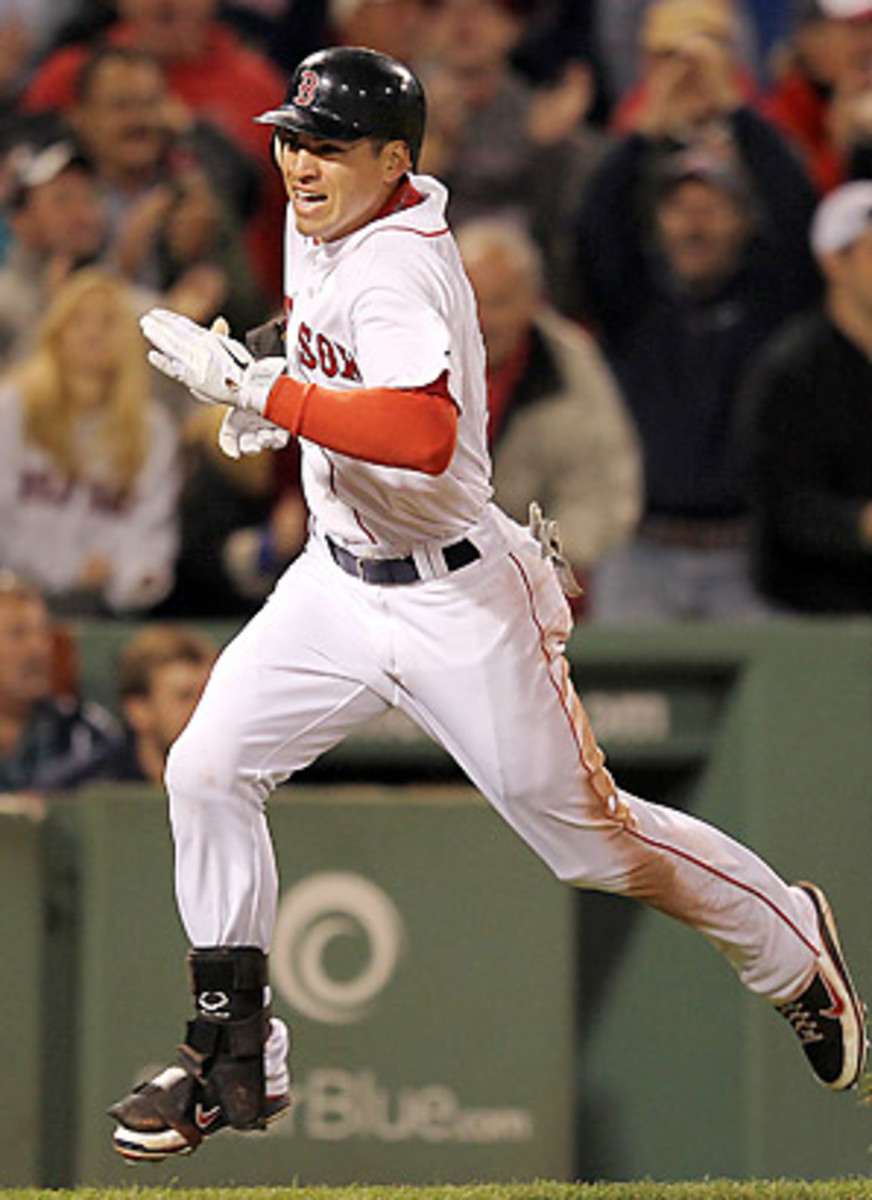Avoiding overvalued players in draft key to building contender
A typical snake draft or an auction is really just a puzzle, the latter more elaborate than the former. As an owner, what you're really trying to do is put together a winning team, piece by piece. One of the surest ways to screw up the puzzle is to pick one of the wrong pieces early, or use too much of your budget on a disappointing piece. That one misstep has a ripple effect on the rest of your draft or auction that sometimes cannot be countered.
The baseball season is long and your fantasy roster is deep, but everyone needs a couple guys capable of carrying their team for weeks at a time. Nine times out of 10, you're going to find those guys in the first few rounds or in an auction's most expensive tiers. Mixed in among the studs are a handful of overvalued players that threaten to undermine your entire draft or auction. They may have the same price tag, but they won't provide near the rate on return as their counterparts, especially when you consider the impact they have as you fill out your team.
So what's the common thread among the overvalued players of this year's early rounds? They're outfielders. Outfield remains the deepest offensive position, by far, in fantasy. Meanwhile, first base gets shallow pretty quickly this year (take a look at the names after the first six guys, who will all be gone by the 30th overall pick), shortstop and third base are as shallow as ever, and second base, while not the dearth of talent it has been in the past, has few elite options. On the flip side, B.J. Upton is the 20th-ranked outfielder by average draft position right now. Jason Heyward is 31st. Logan Morrison is 38th. There's talent to be had late in the outfield.
Let's take a look at some of the pieces you want to avoid, given their current prices.
Jacoby Ellsbury, Red Sox -- There are few demographic groups more fickle than the fantasy player. I loved Ellsbury last year when he was coming off the board in the fifth round of a typical draft. Now that he's up in the penthouse with Miguel Cabrera and Albert Pujols and Matt Kemp and Troy Tulowitzki, I can't get away from him fast enough. Look, I still love Ellsbury the player. I just can't justify taking him with one of the first six or eight picks of a draft. If you take him that high, you're basically saying that you believe he's giving you another 30-30 season, with near 100 RBI and 100 runs. I have little doubt about the steals and the runs, but I'll let someone else believe that Ellsbury can mash another 30 homers in 2012. Even if he falls off to 25 homers and 90 RBI, he doesn't justify that draft slot. Why should you take Ellsbury over Joey Votto or Adrian Gonzalez, given the talent pool at their respective positions? The answer? You shouldn't. If he were going 10 picks later, he wouldn't be in this column. Unfortunately, he's hobnobbing with the first-round locks, and I don't think he belongs.
Curtis Granderson, Yankees -- See Ellsbury, Jacoby. The argument against Granderson is a carbon copy of his Boston rival. Coming into last year, Granderson's career slash against lefties was .215/.262/.346. All of a sudden, he hit .272/.347/.597 against lefties in 2011 with 16 home runs. In his entire career up until last year, he had 20 homers off southpaws. That helped him to a career year, in which he hit .262 with a .916 OPS, 41 homers and 119 RBI. Just like Ellsbury's power numbers, I'll let someone else buy that Granderson will have the same success against left-handed pitching this season. His 19.38 ADP has him going ahead of Ian Kinsler, Tim Lincecum and Mark Teixeira. Give me any of those three guys over Granderson any day.
Josh Hamilton, Rangers -- Why should I spend a top-30 pick on an outfielder who's fairly certain to miss 30 or so games? Outside of his coming-out party in 2008, Hamilton hasn't played more than 133 games in a season. He can get away with it when he's putting up transcendent numbers like when he hit .359/.411/.633 with 32 homers in '10. Unfortunately, seasons like that don't come around all that often, especially for oft-injured players on the wrong side of 30. The song remains the same here. Let someone else pay for the career year.
The first third of a fantasy draft is no time to mess around. It's time to build a foundation and lock up as many sure things as possible. Hamilton is no sure thing. Third basemen Adrian Beltre and David Wright have lower ADPs in Hamilton's neighborhood, yet provide top-notch options at a much shallower position. The elite first basemen, second basemen and shortstops should be gone, but aces like Cole Hamels, Jered Weaver and David Price make for better investments, as well.
Every closer with a top-100 ADP -- This is one of my favorite exercises every year. Here are the 10 closers with the most saves in 2011, along with the ADP from last season:
1. Jose Valverde -- 49 saves, 152.79 ADPt-2. John Axford -- 46 saves, 178.41 ADPt-2. Craig Kimbrel -- 46 saves, 253.72 ADP4. J.J. Putz -- 45 saves, 161.9 ADP5. Mariano Rivera -- 44 saves, 61.49 ADP6. Heath Bell -- 43 saves, 90.64 ADP7. Drew Storen -- 43 saves, 214.15 ADP8. Joel Hanrahan -- 40 saves, 268.23 ADPt-9. Francisco Cordero -- 37 saves, 174.1 ADPt-9. Brandon League -- 37 saves, 302.55 ADP
Conversely, Joakim Soria, Carlos Marmol and Brian Wilson were all taken in the top 100 in a typical draft, and all had down seasons. Don't pay for saves.
Chat with me on Twitter, @MBeller.






































